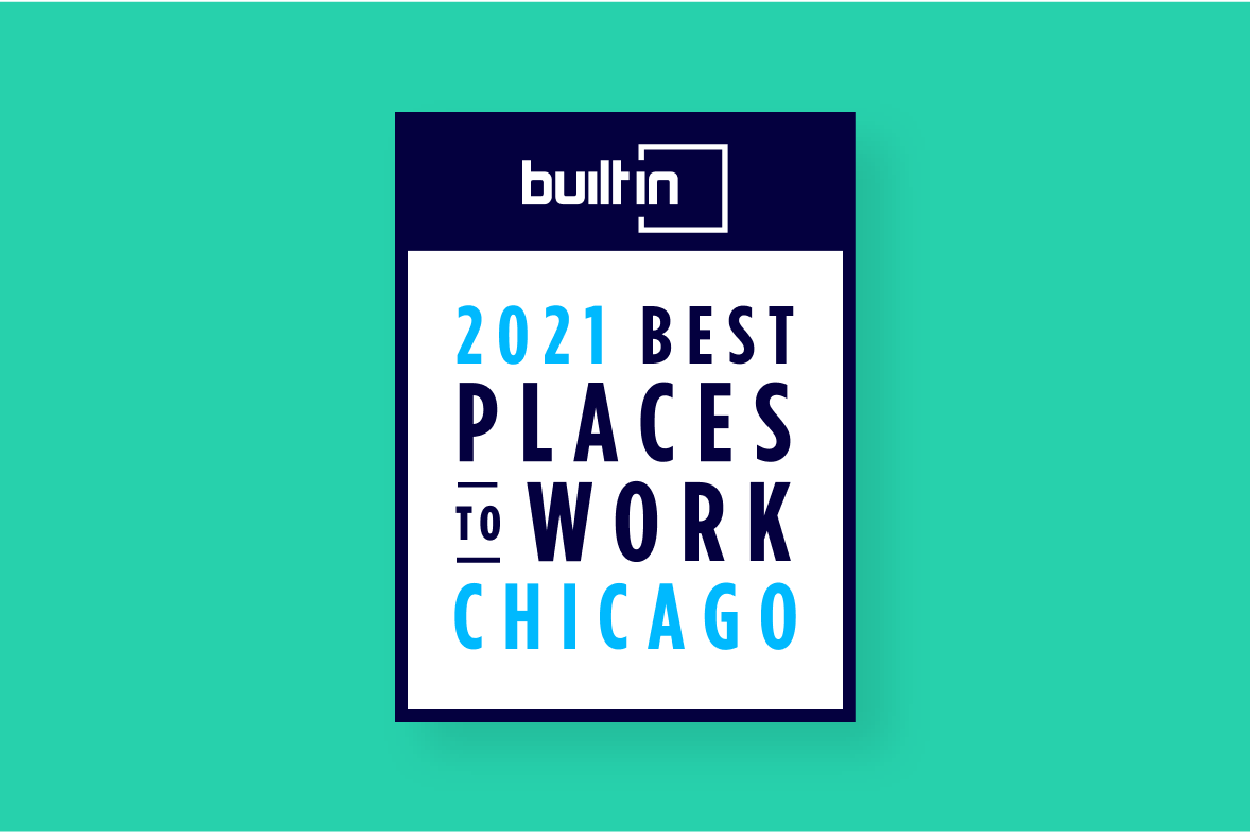The Secrets to Winning the Battle for Top Talent
Steve Jobs was a brilliant leader who understood the need to hire top talent. He once said, “I noticed that the dynamic range between what an...
Connected Navigation Platform
Guiding to high-value care
Behavioral Health
Foster a mentally healthy workplace
EAP
Supporting holistic wellbeing
Virtual MSK Care
Reimagining musculoskeletal care
Virtual Primary Care
Powered by smart navigation
Surgery Centers of Excellence
Best-in-class surgical outcomes
Virtual Urgent Care
Immediate care, any hour of the day
Chronic Care
A new approach to chronic care
Integrations
Flexible to any strategy

A business’s attention to cultivating a diverse group of employees is strongly linked to its level of innovation. Multiple and varied voices with a wide range of experiences can help companies come up with new ideas, products, and services. Forbes surveyed companies with revenues from at least $500 million to more than $20 billion, and they overwhelmingly agreed on the value of diversity. This is particularly true for the largest companies with over $10 billion in revenue. Fifty-six percent of surveyed companies strongly agreed that diversity gave their companies an edge. “Because of our diverse workforce, we’ve experienced a boost in productivity.
When you can move people to contribute to their fullest, it has a tremendous impact,” said Rosalind Hudnell, Director of Global Diversity and Inclusion at Intel. If companies as big and successful as Intel believe in diversity, you better believe that your company needs to review its diversity policies.
How to approach diversity
We decided to speak with six companies and find out how they approach diversity. Here’s what we found:
Jessica Choi
Assistant Vice President of Talent Acquisition and Diversity
Penn Mutual Life Insurance Company – 1,000 employees
According to industry data from LIMRA, the average financial adviser is a 58-year-old man. The Bureau of Labor Statistics suggests that upwards of 300,000 of these financial advisers will be retiring over the next ten years. As a company, Penn Mutual recognizes that we have a tremendous opportunity to reshape our field force, to make it more diverse and more reflective of the communities we serve.
Our recruitment strategy encompasses three forms—we strive to educate, elevate and engage:
Educate
Many people don’t understand the possibilities of working in the industry. From a communications and branding perspective, we must share our stories and voices to those who may not know us. Sponsorship of the Penn Mutual Collegiate Rugby Championship, for example, has been instrumental in allowing us to reach stakeholders and communities that we haven’t previously tapped into.
Elevate
As Penn Mutual evolves talent overall, we cannot rely solely on sharing our story. We must also elevate the company by challenging our own thinking on how we do things when it comes to our recruiting networks, training programs, etc. We’re in a relationship business, so we tend to go to people we know, and we hire people through those connections, who then go on to develop clients among their connections. We can’t keep fishing in the same pond and expect to catch different fish. As we educate our audience, we also recognize that we ourselves need to continuously learn and elevate ourselves.
Engage
Tapping into communities that we haven’t previously been exposed to is also an important key to our recruitment strategy. We are engaged with organizations such as the Chinese American Insurance Association, Hispanic Chambers of Commerce, the Urban League and U.S. Pan-Asian American Chamber of Commerce, though my experience shows that it is best to work at both the national and the local level if you really want to engage with a community. Diversity is more than just ethnicity, as well. Industry data shows that only 25 percent of advisers are female. Women are a huge market that our industry can tap into, in addition to other communities that haven’t received much exposure – multicultural/ethnic populations, veterans, LGBT and millennials. A diversified workforce is better able to respond to and understand the needs of the client.
Christine Chung
Senior Talent Manager
Fueled – 100 employees
It’s crucial to take note that there are no such thing as diverse candidates, however, an organization can create diversity amongst the type of people they welcome to their team. The market is leading us to see that D&I efforts can be encouraged through empathy, data, and strong partnerships with internal talent/recruiting teams to use the organization’s hiring data.
Once the hiring data tells its story, fixing this problem isn’t a matter of telling the hiring team that they were doing something wrong. It means looping them into the conversation and helping the team understand why there is a need for us to strive to build a better, more empowering and safe work environment. Create a culture of openness. Every organization can start by building out a D&I team.
Felicite Moorman
CEO
STRATIS IoT & BuLogics – 100 employees
If you don’t have a person of color or a female leading in your organization, whatever you are putting out will fall flat. Two out of three of my VPs are women, and together my team speaks 23 languages. In a company of under 50 people, that doesn’t happen without some significant effort.
Diversity in the workplace includes more than just people of color and women. Bringing in an immigrant who looks like other people creates diversity in your workspace because their experience in life is different. One can’t assume that diversity equates to an image. It really has to be a life experience you are looking for that goes beyond what is topical and obvious.
You have to watch your salaries across your company and ensure that you are paying your diverse talent the equivalent or better than your non-diverse talent. If you don’t have diversity in your workplace, you have to actively work for it. Don’t ever pay them less than their non-diverse counterparts. You pay them more because they are in demand, not just because they are diverse but because they fought a battle to be where they are that is beyond what other people had to fight for. They know their value. This will mean different things for different companies, but it is intrinsically important to create equity in salaries not just for women but across your company. It has to be consciously considered and addressed.
You have to be family friendly. If you want a diverse workspace, you have to have flexible work capabilities. Work has to be reinvented if we really want diverse perspective and diverse experience—and we do want these things because when we have them we literally create better products because we have a friction that doesn’t exist if eight bros go in a room and make something. If you have eight people with vastly different experiences creating anything, that thing they agreed to create together will be infinitely more valuable to the world than what eight bros can make.
As a family-friendly organization, you have to allow for people to expand who they are into their workspace, and you have to get creative to make it happen. If you can have a daycare in your workspace, by all means, do it. If you are a Fortune 500 company and you do not have daycare, you are foolish at best. And you will likely be left behind.
You need to teach people to communicate well. You wouldn’t think that your job as an employer is to teach people to communicate, but people need to know how to say, “I’m sorry, I said the wrong thing in that moment, and I see that I did.”
If we are creating a diverse workspace, we have to prepare for missteps—that is part of addressing the patriarchal culture we want to change. You have to enable people to apologize, and your leadership has to be able to say, “I’m sorry.” It seems like such a small thing, but so few people are capable of saying, “I was wrong, and I am sorry.” You also have to teach people to communicate when they are hurt and damaged by someone else’s false notion of their diverse experience. You need to teach people to communicate the damage caused by microaggressions. And that is hard work. That is a job within itself.
When you are dealing with a diverse workspace, you will also have non-diverse members of that workspace who will not understand what is happening in the world. They won’t understand #metoo, and they won’t understand #blacklivesmatter because they don’t share those experiences. They may be really great at their jobs—you may still pull people in who don’t have that diverse experience—but hopefully, you make better people all around because of the friction that diversity and non-diversity create.
If you can’t get past number one and hire diverse leadership, you don’t get to play in the diverse space ever. Nothing else matters. Ask yourself if you are creating better products because of your diversity, and the answer will be yes.
Michael Maulick
President & CEO
SunLink Corporation – 100 employees
Diversity in the workplace must become part of a company’s core DNA. It takes a commitment from the top to create a culture that understands and communicates internally the business benefits of having a diverse company that reflects our customer base. Benefits include more creative problem-solving, increased product innovation, improved internal communications and, of course, enhanced recruitment. At SunLink, we make a conscious effort to mention our commitment to diversity in our job postings, where we see diversity a growing requirement for top candidates. We actively promote from within and support mentoring to ensure career success. We also embrace a gender-balanced approach to filling our speaking engagements to ensure we are elevating diverse voices in the industry.
Monica C. Smith
CEO
Marketsmith – 80 employees
My goal in life is to make a difference in this world. Marketsmith’s company motto is: “We do great work so we can do good things.” Being “inclusive” or “diverse” fits our definition of “doing good,” and goes beyond my business philosophy into the foundation of my family. My wife and I have a wonderful patchwork of gender, race and delivery mechanism with six children—five black and one white. None of it by design, but rather from an openness to receive. Recently, I had a conversation with our daughter after she attended a teen panel for biracial families with gay parents.
Thinking she might have questions, I asked, “What did you think of the panel?”
She answered, “It was good; they talked about things no one ever talks about.”
Having a perfect opening, I said, “I’m sure it’s hard for you that Mom and I are gay.”
She quickly replied, “Mom, I don’t care that you’re gay.” Then, just a heartbeat later, she said, “I just really care that you’re white.”
The conversation made me realize that how we navigate inclusion to ensure diversity is very personal and very sensitive. Even the best of intentions, like mine with my child, can be off. Where in my mind the challenge was having two moms, the issue in her mind was color. This kind of disconnect is hard to overcome.
So, what do we do in life and business when dealing with differences as we work toward inclusion? Like my family, my hiring for diversity was never planned. We hired smart, unusual people who wanted to make a difference in the world. Then, someone asked for our census. Never having done one before, we were amazed at our own diversity! We are made up of 54% women, 34% millennials, and 25% minorities.
Why? Because we were open to people whose only real commonality was their values, not their ages, race or backgrounds. For example, I was looking for someone with experience in financial technology and met Anil. I thought he was overqualified and a typical millennial, and he had zero experience for the role. He came from a big-six accounting firm, went back to college, and then became an administration counselor. To an HR person, all are major red flags. Yet, I saw someone who wanted to embrace people, loved the concept of technology, and volunteered to build homes for people in Nepal. I related to him on an intuitive level and gave him a shot. It went against logic, but he’s one of our strongest hires!
Hiring people like Anil who don’t “fit” is one of the most powerful tools my organization has. It’s given us the ability to harness and innovate using diversity of thought. As a result, we are stronger, more competitive and able to meet new challenges with a variety of approaches.
Arvind Raichur
CEO & Co-Founder
MrOwl – 25 employees
You can’t artificially create a diverse culture. You’ll get the right talent by welcoming a wide pool of applicants and embracing the idea that the right talent comes from all backgrounds. Maybe the most obvious way to bring diversity into your workplace is to make a point to hire people that are different from yourself. This doesn’t mean that if your specialty is in finance that you only hire content writers. But if your “knee-jerk” impulse when hiring is to think, “I need a version of myself,” then stop and re-examine because you are doing a disservice to your team and most importantly to your company.
The benefit of hiring people with different backgrounds and experiences from yourself, or even from a younger version of yourself, is you’ll be bringing diverse ways of thinking about your company. Having a table full of people who each approach solving problems differently means your problems have a higher chance of getting solved because you are less likely to approach them from the same angle every time. This is important when it comes to setting your team up for success. Additionally, diverse backgrounds and thought patterns will translate to the product you create, making it more well-rounded for the consumer and giving you a wider audience to engage.
As you’re considering how to hire people that are different from yourself or even your current team members, don’t fall into the trap of hiring in order to fill certain “diversity requirements.” If you’ve built an open and inviting company culture and checked your impulse to hire copies of yourself, then your chances of pulling from a diverse pool of applicants will increase of its own accord.

Steve Jobs was a brilliant leader who understood the need to hire top talent. He once said, “I noticed that the dynamic range between what an...

9 min read
Every great CEO knows employee recruiting is their number one task. Great employees are the lifeblood of any company. If you aren’t seeking the...

I love kicking off a new year with great news. I’m proud to announce that HealthJoy was honored with Built In’s 2021 Best Places To Work in Chicago...